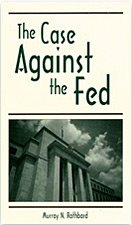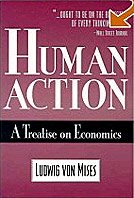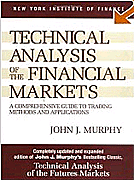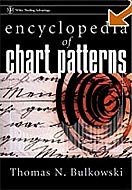Richard Russell: the only true standard of value
The Only True Standard of Value
April 20, 2011 -- The dollar is doing just what the Fed wants it to do -- it's sinking, sinking and sinking more. Sadly, the great American public doesn't understand what's happening, and if they were told they couldn't care less. Of course, what the public does notice is the painful result of the dollar's bear market. The result is seen every time Joe six-pack and his wife hit the neighborhood super-market. The rising prices are a shocker.
And if the price of your favorite cold cereal has not been raised, there is less of the cereal in the box. Then when Joe has to fill up the buggy to get home, he groans as he sees the gasoline tab. "Sixty bucks to fill up this lemon. I'm going to get a motorized bike," growls Joey. "This country is going to hell in a hand-basket."
The US has been getting away with spending more than it takes in, ever since World War II. It's a process that isn't sustainable, and if a process is unsustainable it will end. The US's habit of spending more than it's paying for has finally hit a brick wall. The wall is the demise of the famous "Yankee dollar." In order for the US to live over its head, it must borrow.
Half of the US's borrowing comes from foreign sources. And that's a problem. The fiat US dollar has no fixed value. It's worth must be measured against other currencies. "The dollar is worth so much in relation to the Brit pound -- or the dollar is worth so much in terms of the euro." Our foreign creditors, many of whom are loaded with dollars, keep a sharp eye on the comparative value of the dollar, and they're now frightened and mulling over the credit-worthiness of the US. The recent warning from the S&P rating agency heightened our creditors worries about both the US and the dollar.
The disgraceful battle between Obama and the Democrats vs. Paul Ryan and the Republicans is further raising the fears of our creditors. With commodity inflation now out in the open, Fed head Bernanke has a problem. His absurd defense is to refer to "core inflation" (without the cost of food and energy). Bernanke announces to the world that there's "no inflation," and besides if there is inflation the Fed can end it any time they want.
What Bernanke and the Fed can not control is the tell-tale price of gold.
As I write the battle is on to keep June gold from closing above 1500. Yesterday June gold hit an intra-day high of 1500, but can it close there? "Ah," Bernanke must be thinking, "If I could only control the price of that damn gold."
Yesterday, as I looked at my computer, and I could see the fierce struggle that was going on as gold whipped up six dollars, then five minutes later it is up a dollar-fifty. There must be a powerful contingent (perhaps backed by the Fed) that is desperate to keep the price of gold DOWN and below 1500. But alas for the Fed, gold is traded internationally across the face of the
planet and 24 hours a day. Gold is out of the hands of the Fed and Goldman Sachs, and it trades everywhere and where it wants.
This year I've been telling my subscribers to think in terms of two concepts:
(1) Think in terms of avoiding losses (rather than thinking in terms of building fat profits).
(2) Think in terms of PURCHASING POWER. Are you gaining or losing purchasing power?
For ten years I've advised my subscribers to climb aboard the great bull market in gold. Early subscribers who have followed my advice now have huge paper profits, many have become millionaires, others have been able to retire on their gold positions. Even new-comers have benefited from their belated investments in gold.
Over the last 12 months, the dollar price of gold is up 31.32 percent. Gold is the only true standard of value. The value of everything else must be measured in terms of gold. "How many ounces of gold does it take today to buy a new Ford?" "How many ounces of gold did it require to buy a new ford in 1932?" It costs a lot more (in dollars) to buy a new Ford today. But how many ounces of gold does it cost to buy a new Ford today compared with the ounces required in 1932 to buy a new Ford? What has changed, gold or the dollar? Gold hasn't changed, what has changed is the dollar, which has lost purchasing power.
The US public is rapidly being educated about money and gold. Ads are appearing almost daily in the newspapers, telling readers how and why to buy gold. The ads are being confirmed by the rising price of gold. The public is finally "getting it". I've been in this business since 1958, and I've seen a lot of advisory services come and go -- a lot! What I notice is that there are a number of fairly new advisories that are climbing (entering) on the back of the gold bull market. These advisories are sending out mass mailings to the public -- educating them on the fact of the dying dollar and the Fed's plan to solve the debt problem by diminishing the purchasing power of the dollar. As Lincoln put it, "You can't fool all of the people all of the time." Clueless as the American populace is, they are finally learning about gold, something that their great grandparents took for granted.
In terms of gold: Assessing real estate values in terms of gold. At its peak, the housing market in March 2007, the median US home price was $262,600, which was equivalent to 340.6 ounces of gold. Today's median income price is $186,100 or 109.2 ounces of gold. So in terms of real money, gold, the US median home price has lost 47% since 2007.
Applying the same measurements to the Dow, from the end of 2001 to the end of 2008 an investment in the Dow would have lost 81% of its purchasing power in terms of gold (statistic courtesy Larry Edelson of the outstanding "Uncommon Wisdom" advisory).
The great and harsh lesson of history now stares Americans in the face -- no fiat currency in history has ever survived. This fact underscores the growing panic to get out of dollars and out of all fiat currencies.
This emphasizes the irony of those who are rushing into dollars or dollar denominated bonds and blue-chip stocks on the thesis that these are "safe havens." It's a rush out of dollars to get into other forms of dollars. What's happening now is on a greater scale than has ever occurred before in the history of mankind. It's going to hit the current generation of Americans like a whirlwind. It will be historic in its intensity and destructiveness.
The great gold rush of 1849 opened up the American West. This gold rush of the early 2000's will open up the eyes of Americans to the danger of the Federal Reserve and fiat money.
Below in log scale -- one of the greatest and most significant bull markets in US history.
Below, the Dow over the exact same period.
Richard Russell
Labels: depression, devaluation, gold, inflation, Richard Russell

















![[Most Recent Quotes from www.kitco.com] [Most Recent Quotes from www.kitco.com]](http://www.kitco.com/images/live/t24_au_en_usoz_6.gif)
![[Most Recent Quotes from www.kitco.com] [Most Recent Quotes from www.kitco.com]](http://www.kitco.com/images/live/au_go_0030_ny.gif)
![[Most Recent Quotes from www.kitco.com] [Most Recent Quotes from www.kitco.com]](http://www.kitco.com/images/live/au_go_0365_ny.gif)
![[Most Recent Quotes from www.kitco.com] [Most Recent Quotes from www.kitco.com]](http://kitconet.com/charts/metals/silver/t24_ag_en_usoz_4.gif)

















0 ΣΧΟΛΙΑ (COMMENTS):
Post a Comment
<< Home